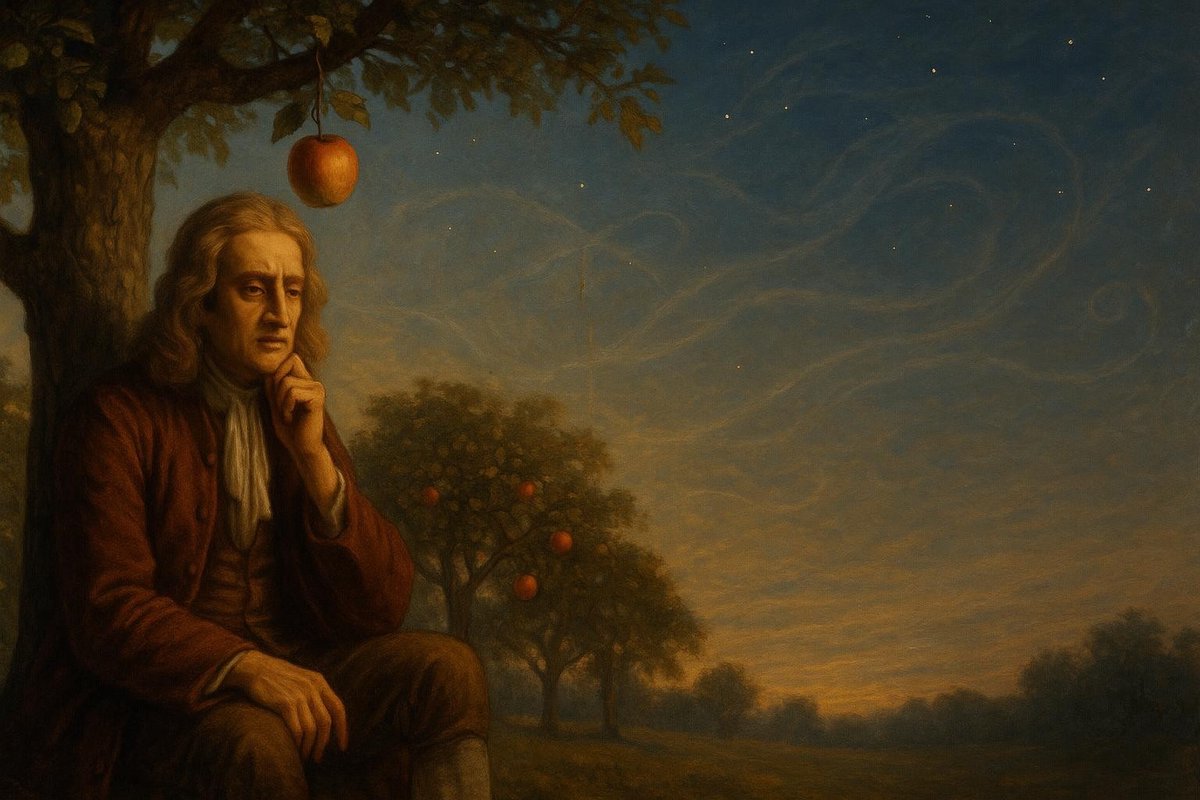
The Quest to Understand the Universe’s Invisible Force
What was it that sparked Isaac Newton’s curiosity to develop the law of gravity, and how did this brilliance make the complex movements of celestial bodies understandable? At first glance, this might seem like a simple question. However, it’s layered with the intrigue of an era when the universe’s workings were still a profound mystery.
Imagine standing in an orchard, a cool breeze rustling the leaves above. One day, as legend has it, an apple fell from a tree, prompting Newton to ponder why it fell straight down rather than sideways or upwards. While the juicy details of this story might be more myth than fact, it captures the essence of Newton’s curiosity.
Before Newton, the heavens were mostly a realm of philosophical speculation. Ancient thinkers like Aristotle believed celestial bodies operated under different rules than earthly objects. But, intriguingly, it was this observation—that the same force pulling an apple to the ground might also govern the moon and planets—that set Newton on his path.
From Apples to the Cosmos: The Surprising Link
Newton’s insight was revolutionary. He realized that the same gravitational force affecting the apple must also affect the moon. This was a moment of clarity that bridged terrestrial and celestial mechanics. How did he come to this realization?
- Newton postulated that if gravity tugged the apple groundward, it could just as well be holding the moon in orbit around Earth.
- He employed mathematics to demonstrate that the gravitational force diminishes with the square of the distance between objects.
This realization turned the celestial sphere into a playground of predictable laws, rather than whimsical forces. No wonder many people believe Newton’s work marked the birth of modern physics.
In Newton’s day, such ideas were radical. It was a time when scientific inquiry clashed with established religious views. Yet, his Principia Mathematica, published in 1687, laid the groundwork for classical mechanics, making the heavens more understandable than ever before.
Science’s Perspective: Gravity’s Grasp on the Universe
So what does science say about Newton’s groundbreaking ideas today? Despite centuries passing, his laws remain foundational. Of course, Einstein later expanded on them with his theory of relativity, but Newton’s equations still work for many practical purposes.
- Newton’s law of universal gravitation is used to calculate trajectories of spacecraft venturing beyond Earth.
- It explains the orbits of planets, the motion of comets, and even the path of satellites orbiting Earth.
Interestingly, Newton’s theories provided a springboard for further scientific exploration. They inspired others to question, test, and refine their understanding of the universe. This is why many regard his work as one of the critical turning points in the history of science.
His vision, surprisingly, was not limited to science. Newton’s work interwove scientific exploration with philosophical musings—posing questions about our place in the cosmos and the nature of reality itself.
What Gravity’s Story Means for Us Today
Newton’s curiosity did not just illuminate the cosmos; it set a precedent for inquiry and exploration. What does this mean for us today?
- Newton’s story is a reminder that simple observations can lead to profound insights.
- It underlines the power of curiosity and critical thinking in making groundbreaking discoveries.
Interestingly, the essence of Newton’s journey—the apple, the moon, the falling—serves as a metaphor for the interconnectedness of all things. It encourages us to look beyond the ordinary and see the universe’s invisible threads.
As time goes on, his story continues to inspire scientists, philosophers, and dreamers alike. It reminds us that the universe is vast, but understanding its mysteries begins with a simple question.
In conclusion, the tale of Newton and his gravitational epiphany teaches us about the enduring power of curiosity. It shows how one individual’s quest for understanding can illuminate the path for generations to come, bridging the gap between the seen and the unseen, the simple and the complex.
Fuel Someone Else’s Curiosity
Share this story with others who may be sparked by the wonder of the universe. Encourage them to ask questions, seek answers, and perhaps, like Newton, change the world with their curiosity. After all, the next great discovery could begin with a single question in the mind of someone you know.

Leave a Reply